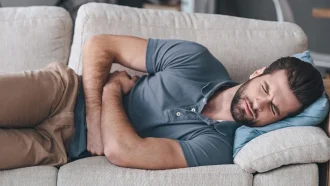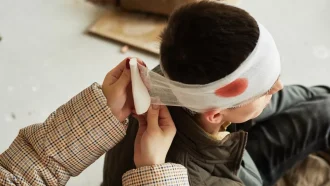
Art Therapy Near Me
The Benefits of Art Therapy for Recovery
Table of Contents
If you are affected by substance or mental health problems, a variety of treatments can support your recovery. Some of those treatments are considered main or frontline options. However, you may also benefit from a number of secondary treatments, as well. One potential option is known as art therapy.
Recent research supports the usefulness of art therapy near you. Effective art therapy can play an important role in your recovery from both drug and alcohol addiction. It can also help you recover from a range of separate mental illnesses. Keep reading to learn more about the benefits of art therapy.
What Is Art Therapy?
Art therapy is not the same as unstructured participation in various kinds of art. Instead, the term describes a specific form of structured treatment that uses art as part of its foundation. Art therapy is not a standalone treatment for substance or mental health problems. Instead, it is an integrative or complementary treatment. This means that doctors use the therapy alongside other treatment options.
Unlike traditional psychotherapy, art therapy does not rely primarily on talking. Instead, it seeks to help you express yourself in non-verbal ways. This is important because non-verbal expression may allow you to access things in your mental life you cannot access verbally. Specific things art therapy relies on include:
- Kinesthetic learning, or learning by using your body
- Sensory learning, or learning through your senses
- Perceptual learning
- Symbolic learning, or learning through the use of symbols
These forms of learning help make you more receptive to non-verbal information. They also help you improve your ability to express yourself. Art therapists sometimes work one-on-one. The therapy can also be used in group sessions or with families or couples.
Any artistic medium can be used in art therapy. A partial list of the possible options includes:
- Painting
- Drawing
- Sculpture
- Collage
- Fiber arts
Most therapists provide a range of options from which you can choose.
Training for Art Therapists
Not just anyone can start practicing as a legitimate art therapist. Instead, all qualified practitioners must meet certain educational standards. For example, they must hold a master’s level art therapy degree from an accredited school. They must also spend time working as interns with trained professional therapists. In addition, training for art therapists includes working with clients in actual therapy sessions. A total of 1,000 hours of post-graduate work must be completed under appropriate supervision.
Is Art Therapy for Adults, Too?
When you think of art therapy, you may think of children, not adults. This makes a certain amount of sense given the popularity of arts and crafts for children. But art therapy is not arts and crafts. Its usefulness is also not limited to children. Adults of any age can also benefit from participation in an art therapy program.
Settings for Art Therapy Near You
One of the best things about art therapy is that it can be used in a wide variety of settings. For example, substance treatment or mental health facilities may make use of this therapy. Other potential settings for art therapy include:
- Private therapists’ offices
- Medical or psychiatric hospitals
- Substance or mental health crisis centers
- Community health or wellness clinics
- Primary or secondary schools
- Veterans’ centers
Art therapy is also offered in some senior living communities.
Applications for Art Therapy
What are the possible applications of art therapy? In other words, who can benefit from this form of complementary care? Applications for art as therapy include not only substance and mental health treatment. They also include support of:
- Friends and families of people in treatment
- People enrolled in hospice programs
- Anyone coping with the effects of grief
- Active-duty military personnel
- Victims of sexual trafficking
Benefits of Art Therapy for Drug and Alcohol Treatment

Art as a form of therapy has been used in substance treatment since the 1950s. Today, a little over a third of all such programs in the U.S. offer this form of therapy. Its use is especially common in programs with large numbers of women participants.
Art in therapy for substance problems emphasizes expression through creativity. Potential methods include such things as:
- Using art to describe events that occurred while under the influence
- Drawing or painting specific emotional states
- Painting to reduce stress and anxiety
- Keeping a journal on the artistic experience
Do methods such as these provide any real-world benefits? Decades of evidence suggest that they do. Specific benefits of art therapy reported in various studies include:
- Lowering resistance to treatment for alcohol problems
- Helping participants overcome denial about their situation
- Increasing motivation to change for the better
- Improving active participation in recovery
- Decreasing feelings of shame regarding substance problems
- Making it easier to communicate with others
Mental Health Treatment and Art Therapy
What about mental health treatment and art therapy? Research shows there is a strong connection between art and mental health activities. Over the years, studies have been done on the benefits of art therapy for conditions such as:
- Depression
- Anxiety disorders
- Schizophrenia
Researchers have also explored the benefits of the therapy for people with PTSD. The results of these studies show that art therapy has a range of potential benefits for people affected by depression or anxiety disorder. Examples of these benefits include easing anxiety and depression symptoms. They also include improving the quality of life for affected people.
People with schizophrenia may also benefit in multiple ways. For example, art therapy may ease the impact of negative schizophrenia symptoms. This term describes the absence of such things as:
- Emotional expressiveness
- The ability or urge to talk
- The capacity to experience pleasure
In addition, art therapy may help ease the classic psychotic symptoms of schizophrenia. These symptoms can include both hallucinations and delusional thinking.
Art therapy is also considered a promising complementary treatment for PTSD. People with this disorder who receive art therapy may experience a decrease in their PTSD-related symptoms. They may also experience a decrease in any symptoms of accompanying depression. Art therapy may provide just as much of a benefit as certain forms of traditional psychotherapy.
Trauma and Artwork
An underlying cause of PTSD is exposure to major traumatic events. Unaddressed emotional trauma can also lead to other serious mental health issues. Limited research has been done on the direct effects of art therapy on trauma. But the results of this research are promising. They show that art therapy may help ease emotional trauma in many affected people.
Foundations for Long-Term Success
There are some common foundations for long-term success through art therapy. Perhaps the most important thing you can do is find an experienced, qualified therapist. Trained therapists not only know how to guide your therapeutic journey. They also know how art therapy fits into other aspects of your treatment.
It also helps to set reasonable expectations. Art therapy is not playtime or an escape. Instead, it forms a part of effective recovery, just like other treatments you receive. To gain the potential benefits, you will need to put in the work. In addition, it is important to understand that art therapy is not a magic bullet for recovery. While it is useful in many cases, it will not work on its own. You must also apply yourself to other aspects of the recovery process. It also helps to know that some people may not benefit from art therapy.
Looking for Art Therapy Near Me?
How can you find an art therapist working in your local area? You can achieve this important goal in several ways. For example, you can talk to your doctor, addiction specialist, or mental health specialist. All of these professionals should be able to help you in your search for local providers. If you are currently seeking treatment, ask your preferred programs if they offer this form of therapy.
The American Art Therapy Association, or AATA, is another potential source of options. This organization serves as a nationwide resource for art therapy providers and participants. The AATA maintains an art therapist locator that includes therapy sources in almost all of the 50 states.
Be aware that many art therapists specialize in treating certain groups of people. For example, some therapists may only treat children, while others may only treat adults. The therapists working in adult addiction and mental health programs are trained for those specific environments.
Find Effective Art Therapy at Emerald Isle Health & Recovery
At Emerald Isle, we offer a full slate of addiction and mental health treatments for greater Phoenix. Those treatments include complementary options such as art therapy. We offer multiple outpatient programs for people able to receive treatment while living at home. We also provide onsite treatment through our comprehensive residential program. With help from the experts at Emerald Isle, you can start your recovery from any kind of substance problem. We provide the same high standard of care for the treatment of other mental health issues. Emerald Isle is also your source for the treatment of combined substance and mental health problems. To learn more about our many services, call us today.
REFERENCES:
- American Art Therapy Association: About Art Therapy – Definitions
- American Art Therapy Association: About Art Therapy
- Cleveland Clinic – Health Essentials: What Is Art Therapy
- Journal of Addiction Nursing:The Use of Art and Music Therapy in Substance Abuse Treatment Programs
- Frontiers in Psychology: Art Therapy – A Complementary Treatment for Mental Disorders
- Art Therapy – Journal of the American Art Therapy Association: Quantitatively Improved Treatment Outcomes for Combat-Associated PTSD With Adjunctive Art Therapy – Randomized Controlled Trial
- Trauma, Violence & Abuse: The Effectiveness of Art Therapy in the Treatment of Traumatized Adults: A Systematic Review on Art Therapy and Trauma








